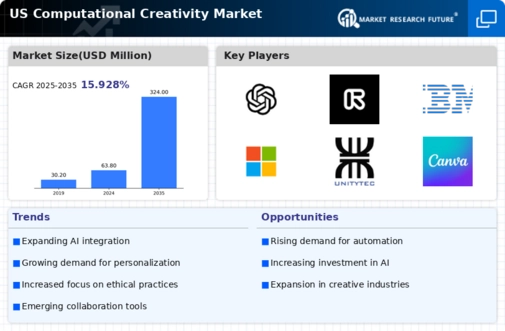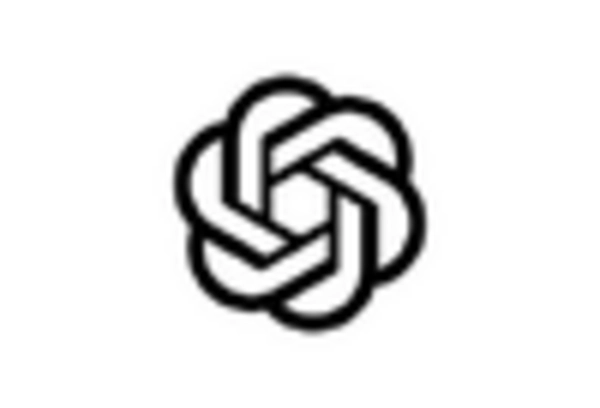Advancements in AI Algorithms
The computational creativity market surges due to advancements in AI algorithms. These innovations enhance the ability of machines to generate creative content, such as art, music, and writing. In 2025, the market is projected to reach approximately $1.5 billion, reflecting a growth rate of around 25% annually. This growth is driven by the increasing demand for automated creative solutions across various industries, including advertising, entertainment, and education. As AI becomes more sophisticated, it enables creators to explore new artistic avenues, thereby expanding the scope of creativity. The integration of machine learning techniques allows for personalized content generation, which is particularly appealing to businesses seeking to engage consumers more effectively. Consequently, the computational creativity market is likely to continue evolving as these technologies become more accessible and user-friendly.
Emergence of Ethical Guidelines
The emergence of ethical guidelines in the computational creativity market is becoming increasingly relevant. As AI-generated content raises questions about authorship and originality, stakeholders are advocating for clear ethical standards. In 2025, discussions surrounding these guidelines are expected to intensify, particularly as the market continues to expand. The establishment of ethical frameworks may influence how companies approach the use of AI in creative processes, ensuring that creators' rights are respected. This focus on ethics could also enhance consumer trust in AI-generated content, which is essential for the long-term sustainability of the computational creativity market. By addressing these concerns proactively, the industry may foster a more responsible approach to creativity, balancing innovation with ethical considerations.
Rise of Collaborative Platforms
The emergence of collaborative platforms is reshaping the landscape of the computational creativity market. These platforms facilitate teamwork among artists, designers, and technologists, enabling them to co-create and share ideas seamlessly. In 2025, the market for collaborative creative tools is expected to grow by 30%, driven by the increasing need for remote collaboration in creative projects. This trend is particularly relevant in the context of the digital economy, where geographical barriers are diminishing. By leveraging cloud-based technologies, creators can work together in real-time, enhancing productivity and innovation. The rise of such platforms not only democratizes access to creative tools but also fosters a culture of shared creativity. As a result, the computational creativity market is likely to witness a significant transformation, with more individuals participating in creative processes than ever before.
Growing Demand for Personalized Content
The demand for personalized content is a driving force in the computational creativity market. Consumers increasingly seek tailored experiences, prompting businesses to adopt creative solutions that cater to individual preferences. In 2025, the market for personalized creative content is projected to grow by 20%, as companies leverage AI to analyze consumer data and generate customized outputs. This trend is particularly evident in sectors such as marketing and entertainment, where personalized campaigns can significantly enhance engagement and conversion rates. By utilizing computational creativity, businesses can create unique narratives and visuals that resonate with their target audiences. This shift towards personalization not only enhances consumer satisfaction but also drives revenue growth, making it a crucial factor in the evolution of the computational creativity market.
Increased Investment in Creative Startups
Investment in startups focused on computational creativity is on the rise, indicating a robust interest in this sector. Venture capital funding for creative technology companies has surged, with estimates suggesting that investments could exceed $500 million in 2025. This influx of capital is likely to accelerate the development of innovative tools and applications that harness AI for creative purposes. Investors are increasingly recognizing the potential of computational creativity to disrupt traditional creative industries, such as publishing and design. As these startups develop new solutions, they contribute to the overall growth of the computational creativity market, attracting further interest from both investors and consumers. The competitive landscape is expected to evolve, with established companies also seeking to acquire or partner with these innovative startups to enhance their offerings.

















Leave a Comment